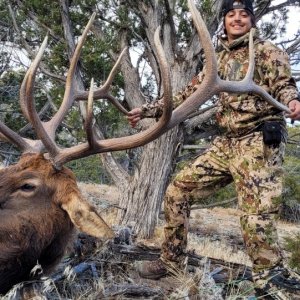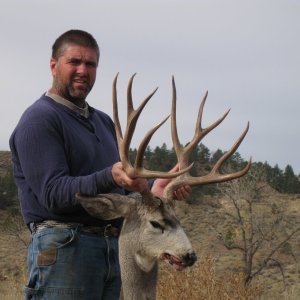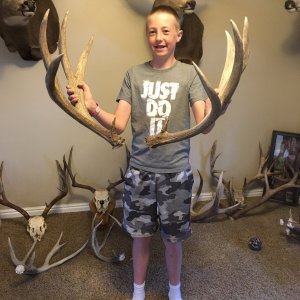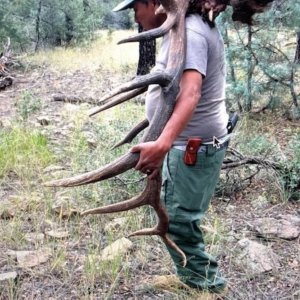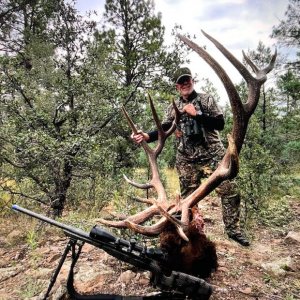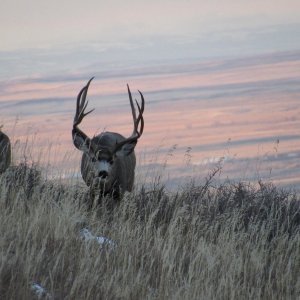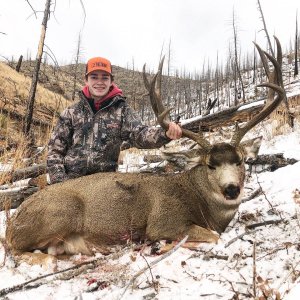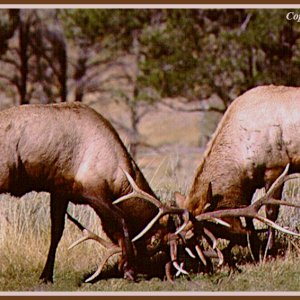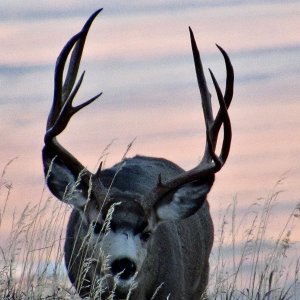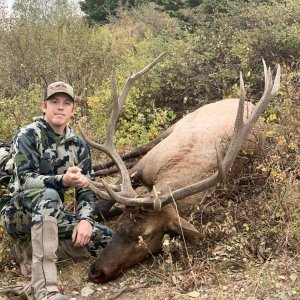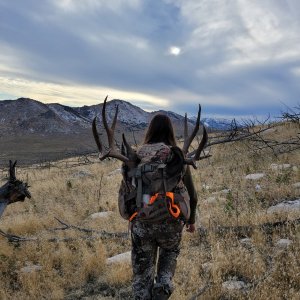Thoughts on Broadheads
Few subjects generate more debate or customer/brand loyalty then broad heads. Everybody has an opinion on them, so I thought I would post mine. Each different design has its advantages and disadvantages
Disclaimer: Lots of people on this forum have more experience and mechanical expertise than me, so take it for what it's worth
SHARPNESS *
Sharper is better, it's that simple. That being said, sharp enough is good enough, if a head is reasonably sharp it will do the job. The generally accepted standard is if it will shave hair off your arm, it's more than sharp enough. Another ?Sharpness? issue is the ability to get acceptable sharpness on a 60% edge angle like G-5 Montec or Snuffer type heads. The fact is, while you can get them ?Sharp enough?, they can never be made as sharp as traditional, replaceable blade heads that use a 30% or less angle on the blades edge. A 60% edge WILL produce more resistance than a narrower edge.
2,3 OR 4 BLADE
Broadheads kill by severing blood veins (see PREFORMANCE ON GAME) With all due respect to Dr. Ashby, I believe 3 and 4 blade heads have an advantage over 2 blade heads because they produce a three
dimensional wound channel compared to the two dimensional wound channel of a two blade head. This causes the potential to sever veins that a two blade head might slip past without touching. It also leaves larger three dimensional entry and exit holes for better blood trails.
CUT ON CONTACT *
Possibly the most over used or misused term in regards to broad heads. Most people think this divides broad heads into two categories. I believe it's more accurate to divide them into three.
With a true ?Cut on contact? head, the first thing to contact the target is a two dimensional, single pointed sharp edge. Examples would be the old Bear Razor head and the newer Magnus Stinger.
Simi cut on contact would be heads where the first cut is made by a three dimensional sharpened edge like on the Magnus Snuffer or G-5 Montec.
Non cut on contact heads would be represented by heads with pointy or Trocar style tips like Original Muzzys or Slick Tricks.
The advantage of a true cut on contact is it produces less resistance at the initial cut, retaining more of it's energy for penetration. The possible disadvantage is this thin blade might not be as strong, and could possibly bend or roll if serious resistance like a shoulder bone is encountered.
PENATRATION *
Penetration is more important then wound channel (see 2,3 OR 4 BLADE ) The ideal is to fully penetrate both lungs, and leave an exit wound. A massive wound channel that only occurs in one lung still leaves the animal the ability to breath with the other lung. Further more, enough penetration to cause an exit wound will produce more blood on the ground for tracking. The fact is, any reasonable combination can and should produce enough penetration on deer size game. When the quarry is larger animals like elk, the ability to penetrate should be a prime consideration.
MECHINACIAL
By all accounts, modern, well designed mechanical broad heads are reliable and deadly.
Many have larger cutting diameters than is possible with a fixed blade broad head that flies true at high speeds. Still, by design, mechanical broad heads have moving parts, parts that could fail to move properly and at the right time. Another consideration is the weak link. Pivoting blades must pivot on something, and it's usually a tiny pin that might sheer off. Sliding blade designs need something to stop the sliding, once again, usually a very small tab or part that has the potential to break. For now, I have a hard time trusting them, maybe someday.
WEIGHT
The main consideration is picking a weight that matches the spine of your arrow (or an arrow that matches the weight of your broadhead), and produces adequate FOC. Beyond that it doesn't matter. You should be using an arrow that has the weight properties you are looking for.
ENDORSMENTS
The worst possible reason to choose a piece of equipment is because of celebrity endorsements. Lets face it, some people would hunt with a rusty sparkplug on the end of their arrow if they were paid enough.
BLADE ANGLE
Blade angle is worth considering to a point, but don't over do it.
NEW vs. OLD SCHOOL
Over the last ten or fifteen years, new designs that are shorter, with smaller cutting diameters have become popular. Because they have less surface area to be affected by air flow, they tend to be more accurate. Most of these new heads are 1 1/8? or smaller. The term ?field point accurate? is very common now, where twenty years ago, most fixed heads were 1 ?? up to 1 ?? and it was largely assumed that it was impossible to get a broad head to hit the same as a field point. Smaller diameters serve two purposes, the help accuracy and increase penetration. Precision manufacturing techniques produce heads that spine true right out of the package. I'm a big fan of these newer broad heads.
ANADOTAL EVIDANCE
Every different shot on a game animal is different. There are so many possibilities that comparing different broadheads performance within a limited sampling is worthless. In other words, just because someone says he had three quick one shot kills with brand X, but lost a deer with brand Y doesn't mean brand X is any better than brand Y.
PREFORMANCE ON GAME
Broadheads kill by severing blood veins. Blood loss reduces or stops oxygen from getting to the brain and other major organs. Internal bleeding can also fill the lungs with blood, causing the same effect. The more veins a broadhead can cut, the faster death will occur. Larger cutting diameter and/or more cutting surface gives the potential to cut more veins within the wound channel, but also cause more resistance, possibly restricting penetration.
Broad head choice should be made considering the game hunted, and the momentum of your arrow.
Lower poundage bows with less arrow momentum should lean towards cut on contact, smaller cutting diameters and fewer blades to increase penetration. Tougher animals require tougher broad heads.
SHOT PLACMENT
Shot placement and angle is far more important that all of this. The fact is a cheap, dull, bargain basement broad head put through both lungs will be much more effective then the very best broad head in the guts.

